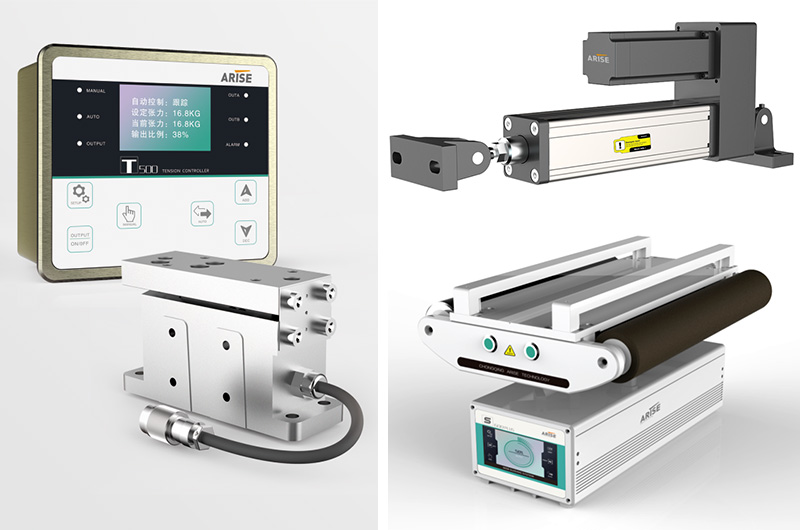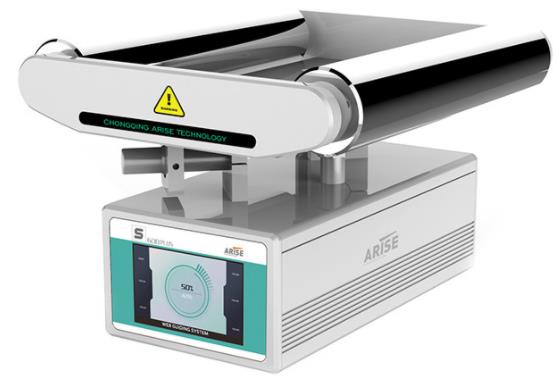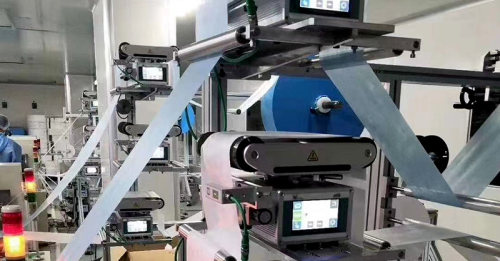Web guiding systems have revolutionized the manufacturing industry, particularly in processes involving continuous web materials, by offering precise alignment and tension control. As production demands continue to rise, the choice of the right web guide system becomes increasingly critical. This article presents an extensive comparison of various web guiding systems, highlighting their operational principles, advantages, and ideal applications.

Line Edge Sensor-Based Web Guiding Systems
At the core of these web guide systems are web line edge sensors that detect changes in light, infrared, or sound patterns as web materials pass through their field of view. These sensors receive signals that reflect the alignment status of the web by emitting beams of light, infrared radiation, or ultrasonic waves across it. When the web deviates from its intended path, the sensor's signal pattern shifts, prompting the web guiding system to make precise adjustments, realigning the web to the centerline or ideal alignment. This real-time feedback loop ensures the web materials remain consistently aligned throughout the production process.
Benefits
Real-Time Alignment: Line edge sensors provide rapid feedback, facilitating quick adjustments and minimizing misalignment.
Non-Contact Detection: These sensors offer non-contact sensing, safeguarding fragile materials.
Versatility: Line edge sensors are compatible with a wide range of materials, making them suitable for various industries.
Ideal Applications
Printing: Ensuring accurate alignment of paper or labels during printing processes.
Packaging: Precise alignment of packaging materials for uniform packing quality.
Textiles: Maintaining fabric alignment for flawless weaving or printing.
Labeling: Accurate label alignment on products or packaging materials.
Converting: Ensuring precision in cutting, slitting, and perforation during manufacturing operations.

Tension Sensor-Based Web Guiding Systems
Web guiding systems equipped with tension sensors are designed to monitor and manage the tension forces applied to moving web materials. These sensors detect variations in tension and provide real-time feedback, enabling swift adjustments to maintain optimal tension.
Benefits
Uniform Tension: Tension sensor-based systems ensure uniform tension across the web material, preventing flaws like creases and stretching.
Versatility: Different sensor types cater to different material types and industrial processes.
Real-Time Feedback: Immediate adjustments guarantee proper tension, enhancing product quality.
Ideal Applications
Textile Weaving: Maintaining consistent tension for seamless fabric weaving.
Paper Manufacturing: Precise tension control during plastic film extrusion and lamination.
Film Production: Accurate tension control for plastic film extrusion and laminating.
Labeling and Packaging: Tension control during label application and packing material production.
Capacitive Sensor-Based Web Guiding Systems
Capacitive sensor-based web guiding systems rely on sensing changes in capacitance induced by the presence of web materials. These sensors excel in detecting the position and alignment of non-conductive or low-conductive materials, which can be challenging for other sensor types.
Benefits
Alignment for Non-Conductive Materials: Capacitive sensors are effective in aligning materials with low conductivity, a task that can be problematic for other sensor types.
Consistent Detection: These sensors offer reliable alignment detection irrespective of material characteristics.
Precision Alignment: High precision ensures superior product quality.
Ideal Applications
Plastic Film Processing: Ensuring precise alignment during plastic film extrusion and laminating.
Labeling and Packaging: Aligning labels on non-conductive packaging materials.
Paper Manufacturing: Accurate alignment of non-conductive paper during printing and processing.
Textile Production: Maintaining alignment of non-conductive materials during weaving and printing.
Summary
Choosing the right web guide system demands a comprehensive understanding of each technology's intricacies and its suitability for specific applications. Line edge sensor-based systems excel in swiftly aligning diverse materials, while capacitive systems thrive in aligning non-conductive materials. Tension sensor-based web guide systems are indispensable for ensuring consistency, while laser sensor-based systems offer unparalleled precision.

When selecting web guide systems, manufacturers must consider factors such as material properties, production environment, required precision, and budget constraints. Each system type presents its own set of advantages and limitations, enabling manufacturers to tailor their choice to their unique production needs. In a world where precision and efficiency are paramount, the ability to choose the appropriate web guiding system represents a crucial step in enhancing product quality, minimizing waste, and maintaining competitiveness in today's dynamic manufacturing landscape.










Comments (0)